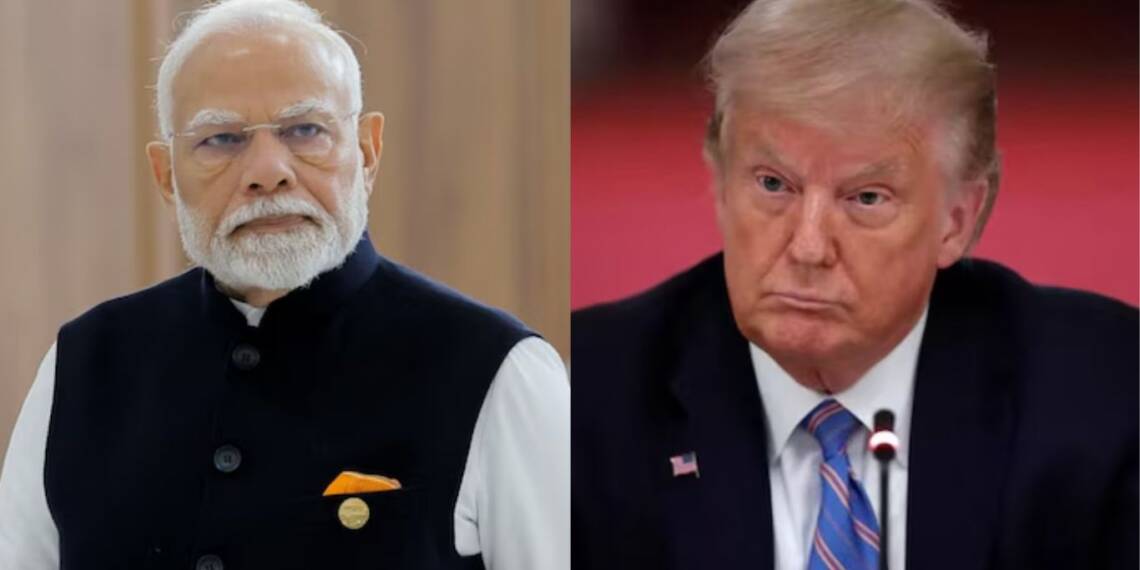In a significant development in global trade relations, India has approached the World Trade Organization (WTO) with a proposal to impose retaliatory tariffs on select goods originating from the United States. This move comes in response to the US government’s ongoing imposition of tariffs on steel and aluminum imports, which New Delhi contends are in violation of international trade agreements.
According to a communication issued by the WTO, India’s proposal was formally received on May 9, 2025, and is being circulated at the request of India’s delegation. The proposed action underscores India’s growing unease with the United States’ trade policy under the leadership of President Donald Trump, particularly in light of escalating tensions between India and Pakistan on terrorism.
A Massage to the US, After its interference in India-Pak Conflict
The Indian government’s response is not solely rooted in trade issues but is also influenced by a broader context the recent India-Pakistan conflict. President Trump’s remarks on Truth Social, where he suggested a role in mediating between India and Pakistan amidst their recent conflict, have drawn sharp criticism. These comments have been perceived as infringing upon the spirit of the Shimla Agreement of 1972, which stipulates that no third-party intervention is permissible in matters concerning India and Pakistan. Trump’s assertion cast doubt on India’s diplomatic posture and was met with firm disapproval from both the Indian government and its citizens.
After Trump’s truth social post and yesterday’s threat about stopping trade with India and Pakistan, if a ceasefire is not reached. It fueled anti-US and anti-Trump sentiment in India. The Indian government did not look happy with Trump’s behavior. According to the Shimla agreement of 1972 between India and Pakistan, no third country is allowed to mediate between these two neighboring nations. Trump’s post on Truth Social questioned the credibility of India’s adherence to the treaty. This does not go with the Indian citizen nor with the Indian government.
Also read: US – China trade deal brings reprieve in the escalating tariff war
The IMF Issue
During the conflict, which was triggered by the Pakistan-backed terrorist attack in Pahalgam, the IMF approved yet another bailout – this time a $1.1 billion tranche – for Pakistan, which has ignited a firestorm of criticism and laid bare the West’s blatant double standards. It would not have been possible without the help of the US, which acts as an indirect hegemony due to its highest voting percentage. This must have been a point of contention between the US and India, which the Indian government chose not to ignore.
In its submission to the WTO, India has stated that it intends to suspend concessions or other obligations equivalent to the trade loss caused by US safeguard measures. The suspension will take the form of elevated tariffs on selected American goods, impacting imports valued at approximately $7.6 billion. The proposed tariff adjustment is expected to yield around $1.91 billion in duty collections from these US-originating products.
India’s position is that the US tariffs are inconsistent with the General Agreement on Tariffs and Trade (GATT) 1994 and the WTO Agreement on Safeguards. The Indian delegation has formally asserted its right to counter the adverse impact on its trade by enacting proportionate measures. New Delhi will keep the WTO’s Council for Trade in Goods and the Committee on Safeguards apprised of its intended course of action. Simultaneously, India has also taken up the matter directly with the US through bilateral consultations.
The United States, in response to India’s earlier request for consultations, maintained that the tariffs were imposed on grounds of national security. Therefore, it argued, the measures should not be interpreted as safeguards under WTO provisions. This stance by the US has been a persistent point of contention since the initial imposition of tariffs. In the same way, India too has to care for its national security and has retaliated to the US.
The origin of the dispute dates back to March 2018 when the US first enacted safeguard tariffs on steel and aluminum products—10 per cent and 25 per cent ad valorem, respectively. These tariffs were extended in January 2020, and further revised in February 2025, with the rate for both categories increased to 25 per cent indefinitely. The continued and now expanded tariff regime, particularly under President Trump’s 2025 policy decisions, has compelled India to assert its position more forcefully on the international stage.
India’s latest move at the WTO signals a decisive shift in its trade strategy and an unwillingness to acquiesce to what it views as unilateral and unjustified trade barriers. The situation is poised to further test the resilience of Indo-US economic relations in the coming months.








